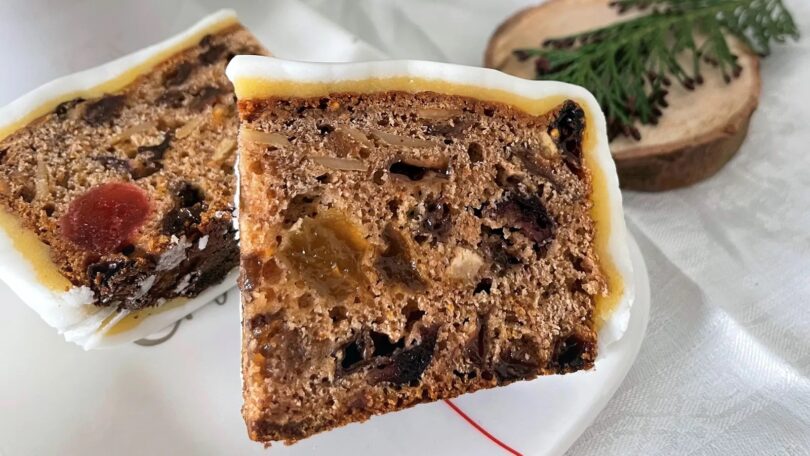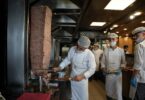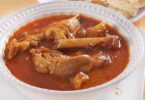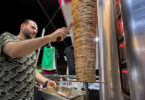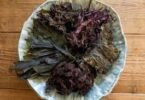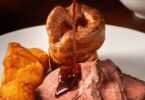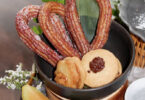Kate Ryan
Twelfth Night is the last great frolicking feast of Christmas. It’s the day decorations are taken down and stored away – woe betide anyone who takes them down sooner, tempting bad luck for the coming year. Across the British Isles, 6 January is most associated with this hand-me-down piece of folklore, rather than the arrival of the Three Kings to Bethlehem bearing gifts of gold, frankincense and myrrh for the baby Jesus.
On the south-western edge of Ireland, in Cork and bordering parts of Kerry, Twelfth Night is still celebrated in style, and exclusively by women. It’s a night for soaking up the last vestiges of Christmas spirit in rambunctious merriment rather than a staid religious observance.
Known as Little or Women’s Christmas, Twelfth Night is an occasion for women to kick back after the hard work of the festive season, gathering in groups of friends and family to dine, drink, chat, laugh and dance the night away.
Christmas cake is a traditional part of Twelfth Night celebrations; rich with fruit, spices and alcohol, covered with marzipan and royal icing, decorated with festive figurines and foil sashes. Where the annual custom of Christmas cake making, baking and feeding (with copious amounts of brandy or whiskey over many months) persists, the effort and expense is never employed for just one cake.
Three cakes are made to last the 12 days of Christmas in Ireland. The first is cut at midnight on Christmas Eve, marking the end of the Christmas fast and paired with whiskey. The second is cut on New Year’s Eve, and the third on Twelfth Night. Charms are baked into the third cake – a bean and a pea – and whoever finds them is named king or queen for a night.
Fruit cakes are a ubiquitous presence in Irish households. There is always one in a tin somewhere, ready to serve with butter and freshly brewed tea. Those enriched with tea-soaked fruits are called tea bracks, a lighter version of Christmas cake and less time consuming to make.
Graham Herterich is a chef, baker and owner of The Bakery by The Cupcake Bloke in Dublin. He recently published his first cookbook, Bake. The book is a homage to the women in his family who taught him to bake and nurtured his love for it, especially his Granny Flynn, who taught him how to make tea brack.
“Food has always been a part of my life. I grew up over the family butcher’s shop so, from an early age, I learned the importance of food; that it kept a roof over our heads,” said Herterich. The men of the family worked in their butchery business, but the women had the biggest influence on him.
“My earliest food memory is my Granny Flynn soaking fruit for a tea brack. I remember sitting at a marbled blue Formica table in her kitchen while she weighed her fruit into a Mason Cash bowl. The tea was always Campbell’s loose leaf from its yellow tin and most importantly, Granny Flynn told me that the tea should be almost cold.”
Almost cold because, explained Herterich, if the fruit is put into hot tea they become too plump; too cold and it takes longer to soak. Almost cold and soaked overnight produces the best results.
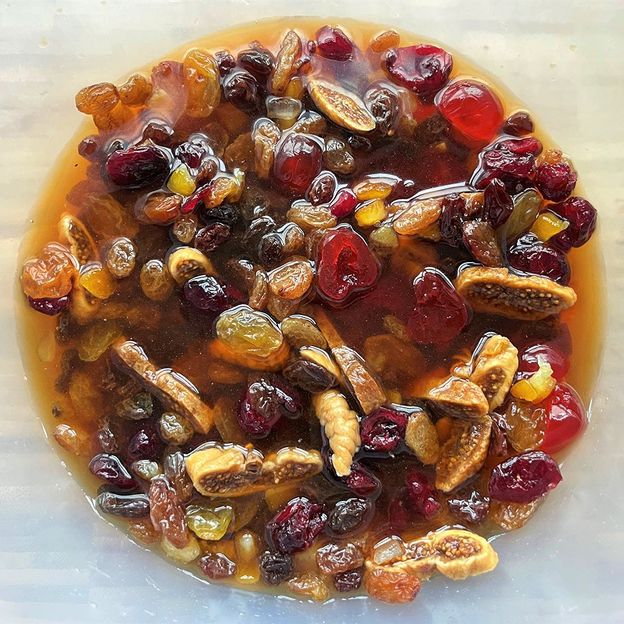
For the best brack, dried fruit is soaked overnight in “almost cold” tea (Credit: Kate Ryan)
Granny Flynn was to tea brack what Herterich’s Aunty Mary was to Christmas cake.
“Aunty Mary was an unbelievable baker; she did all the Christmas baking and a big part was the gifting of cakes. I remember Aunty Mary coming up to the house specifically to gift these cakes to my mum,” said Herterich. It speaks to a time when candied and dried fruits, spices and spirits were expensive luxuries for ordinary people and handmade cakes packed full of such dainties were considered generous gifts.
“Aunty Mary’s cakes were always packed with fruit, especially lovely dark, rich cherries. She used whiskey and brandy to soak the fruit and feed the cake, made her own marzipan and used a lot of flaked almonds for a really nutty taste.”
Herterich has never lost his love for tea brack, dedicating a whole chapter in his book to the simple pleasure of brack and butter. In honour of his Granny Flynn’s tea brack and Aunty Mary’s Christmas Cake, Herterich created a Winter Brack that marries his two favourite food memories.
“Winter brack is packed full of fruit, warming spices, almonds and orange. Serve it sliced with lots of proper butter and a cuppa. As a simple alternative to Christmas cake, top with a thick layer of marzipan and Royal Icing,” he said.
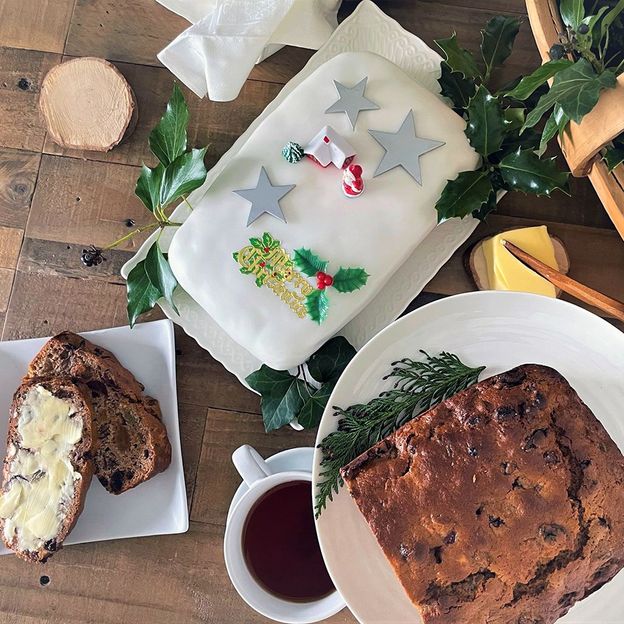
Winter brack can be served simply with butter, or topped with marzipan and royal icing for Christmas (Credit: Kate Ryan)
Winter Brack recipe
By Graham Herterich
Makes one loaf
This version of the classic Irish fruit cake is packed full of fruit, warming spices, almonds and orange. It can be eaten simply with lots of butter and a cup of tea, or dressed up with marzipan and royal icing for a special occasion.
Method
Step 1
Place the sultanas, mixed peel, figs, cranberries, cherries and tea in a large bowl and leave to soak overnight at room temperature.
Step 2
When ready to bake, preheat the oven to 180C/350F fan. Line a 900g (2lb) loaf tin with non-stick baking paper.
Step 3
Add the sugar, almonds, egg, orange zest, mixed spice, cinnamon and vanilla to the fruit and tea and mix well. Gently mix in the flour, being careful not to crush the fruit. Transfer to the lined loaf tin.
Step 4
Bake in the oven for 60–65 minutes. The cake is done when a skewer inserted into the centre of the loaf comes out clean. Allow to cool fully in the tin. Turn out of the tin, sprinkle on more almonds and cut into slices to serve.
Note
Mixed spice is a particular blend of spice used in baking. It’s sometimes called “sweet spice” and is a mix of allspice, cinnamon, nutmeg, ground ginger, cloves, coriander, fennel, caraway and cardamon, all ground into a powder. If it’s unavailable, pumpkin spice can be used, but it will change the flavour of the brack significantly.
Courtesy: BBC

